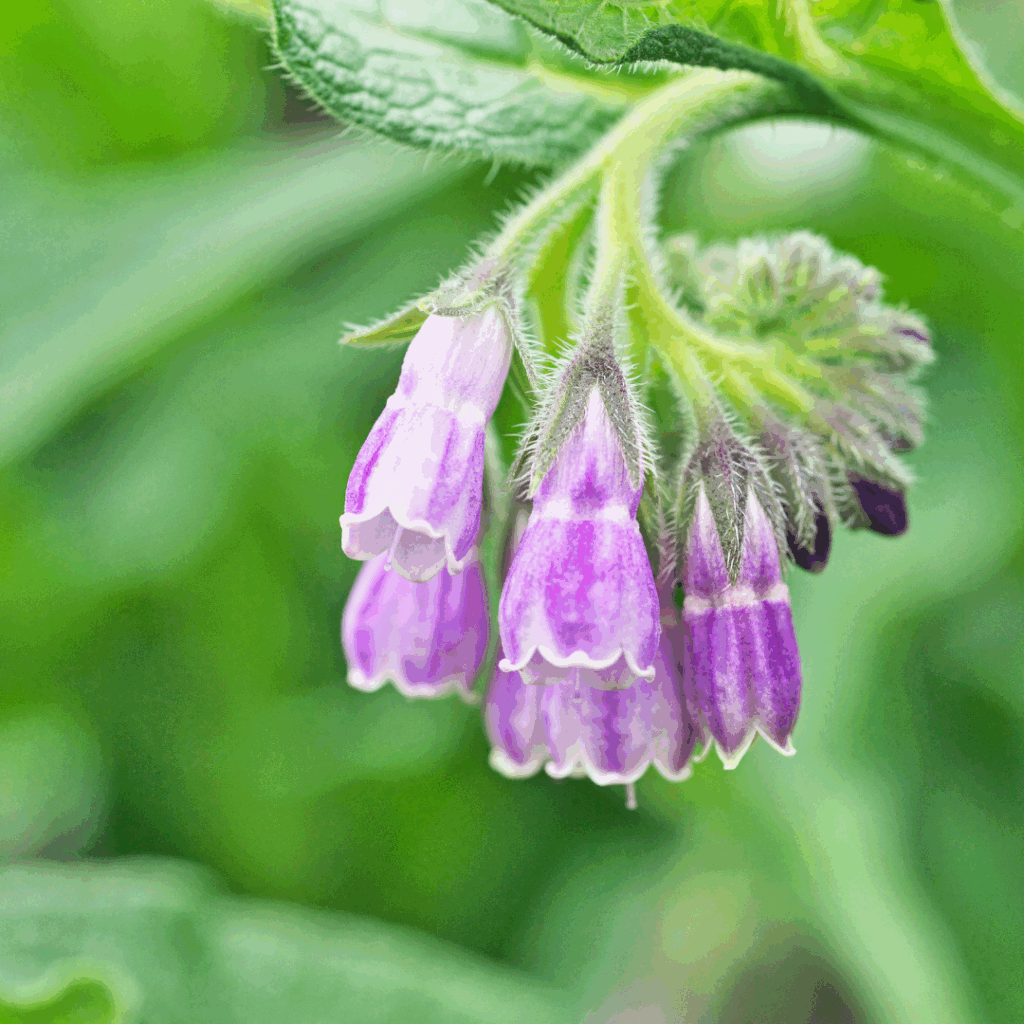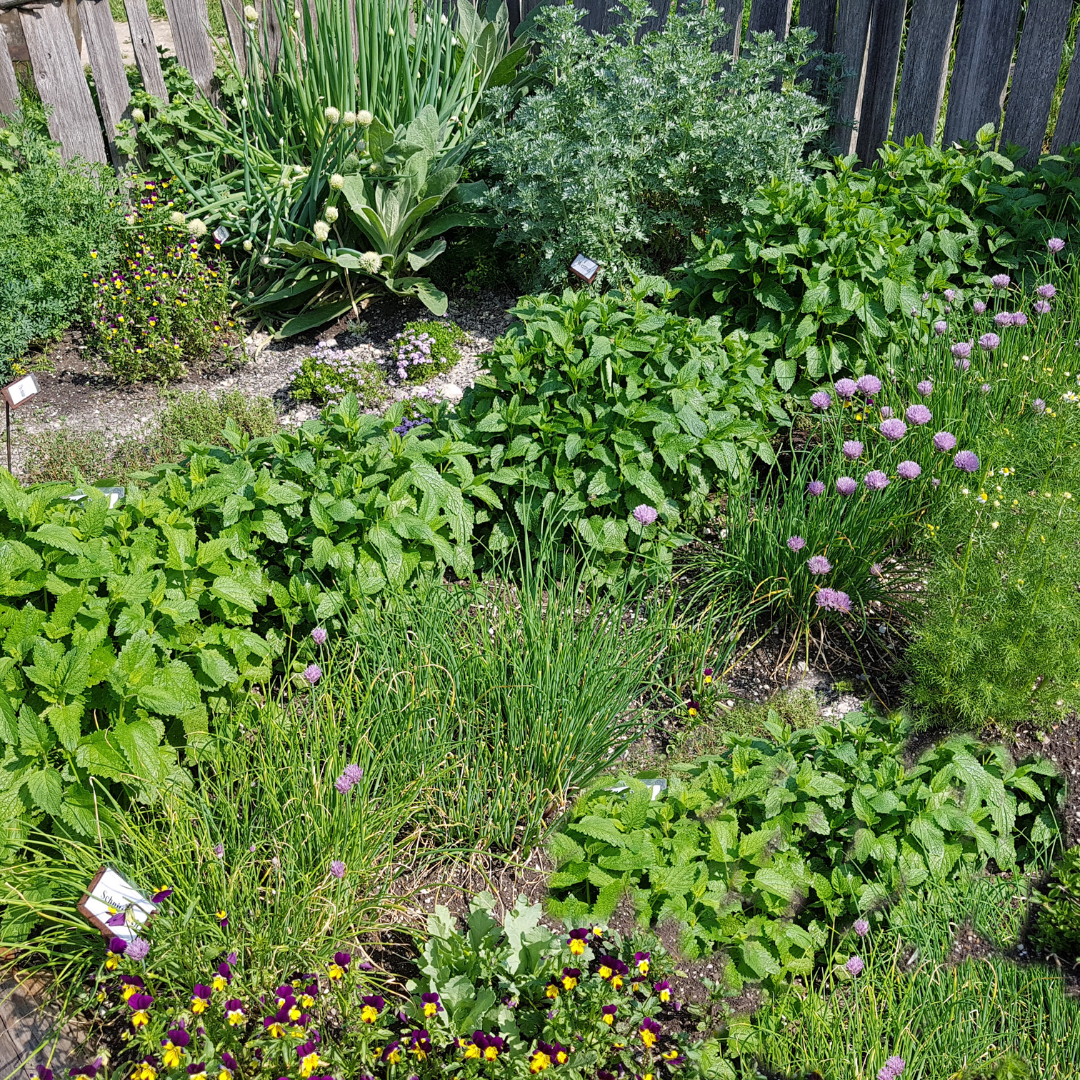Someone asked me what are the must-have herbs to plant in your garden, and I have to admit, I found it hard to answer.
What we herbs we plant in our gardens are kind of personal after all. It depends what our needs are and our overall climate or specific microclimate.
At the same time, I also remember when starting out, how useful it is to have something to guide you, so… without further ado
These are must 10 must-have herbs I’d never be without in my garden!
- Comfrey
Listen, I’m utterly biased cause comfrey is one of my all time fav herb pals, but I couldn’t imagine a life without comfrey and I reckon you’ll love having her in your garden too! I’ve seen her heal ligaments and bones, help people avoid surgery, help with arthritis and all manner of bumps, bruises, sprains and muscular and connective tissue issues. Yes I could actually write a love poem to comfrey… plant her, then come learn with me and we’ll make remedies and wax lyrical together.
2. Yarrow
Yarrow is a primo first aid herb. As a styptic, she’ll help stop bleeding, fight infection and heal all manner of wounds, cuts and scrapes. She grows so easily, often grow wild and weedy in temperate climates and growing abundantly in my garden her. Not just for first aid, you can work with yarrow for menstruation issues, fevers, digestive problems and more! Very versatile.
3. Calendula
Homegrown calendula is just so vibrant and better quality than much of what you can buy commercially. Not only that but it’s an easy herb to grow, a prolific flower-er, especially if you pick flowers regularly, and a joy to work with. So this is my ride-or-die herb to grow myself (although I didn’t grow much this year and I’m kicking myself!).
4. Plantain
For some of you, this helpful plant will be an abundant weed around you, so you mightn’t need to grow it at all. It isn’t for me, so I plant it and it’s one I encourage everyone to grow if it’s not a natural weed at your place. This is because it’s a great first aid plant (there’s a bit of a theme so far isn’t there!)! Its astringent qualities help draw splinters out, or infection and pus out of wounds when made into a simple poultice. That’s mostly why I recommend growing it. Plantago lanceolata is actually a bit tricky to dry, so don’t beat yourself up if it doesn’t dry well for you, but keep trying till you get the hang of it!

5. Aloe vera
This beautifully low-maintenance and drought-tolerant herb is a must in my subtropical garden, although perhaps will be a little finicky in colder environments. It just grows itself, is always there waiting and its soothing gel is a multi-purpose healer, perfect sunburns, skin irritation and to cleanse, tone and moisten skin for home spa days.
6. Tulsi
Tulsi, aka holy basil is a subtropical adaptogen and one of the few adaptogens where you use the aerial (leaves, flowers) parts, which I like because then you don’t have to kill the plant in order to harvest the medicine. Like all the others on this list, it grows abundantly and it also supports other creatures like the bees. Tulsi has amazing benefits for the immune, nervous, respiratory and endocrine systems and is a great ally for burned-out, stressed-out modern life.
7. Parsley (or basil)
Parsley’s always got a place in my garden because it’s an iron and mineral-rich leafy green (and we all know we’re supposed to get more of those in our diets!)
It’s a great antioxidant which combats oxidative stress and it’s utterly delicious and easily included in foods like parsley + wild weed pesto!
You could always sub out parsley and use basil if you’re not a parsley fan (wish my local possum wasn’t!).
8. Thyme
This humble little herb packs an antibacterial punch and I would not be without it in my garden or home apothecary. Thyme offers benefits to the digestive system, urinary system and is supportive for almost all kinds of coughs and lung issues, from the flu to pneumonia (in formula with other herbs). One of my favourite ways to work with it (aside from making eggs taste amazing), is as a herbal steam to help with nasal and sinus congestion or coughs!
9. Hibiscus
What hawthorn is to temperate-climate folks, hibiscus is for the subtropics: namely one of our best cardiovascular herbs that I reckon every home would benefit from. It’s well known for helping to gently lower blood pressure and cholesterol, support healthy circulation, and cool inflammation in the body. Rich in vitamin C, it also strengthens the immune system and promotes glowing skin. Can be made into a delicious jam, which can get non-herb folks on board!
10. Elder
Elder’s superstar status has made it hard to get a hold of at various times over the past few years. So if elderflower or elderberry are a regular part of your home herbal remedies, then it’s definitely worth having an elder tree in your garden! Just know it suckers and can spread quite easily (becoming weedy in some climates), so plant it somewhere it can grow or its roots are naturally contained.
Some honourable mentions
It’s hard to stick to just 10 plants, and depending where you live, mightn’t always be relevant for you, so some others I’d always love to plant would be: nasturtiums, lemon balm, catnip, sage, garden mint, chamomile, California poppy, skullcap, motherwort, ashwaganda, violets, rosemary, lavender (eeek, better stop, but I’d love to hear from you! Is your must-have garden herb not on this list? I’d love to know what’s your go-to in your garden. Jump on my mailing list so we can be pen pals!)
Learn to how to grow, harvest and make your own herbal remedies in the Home Herbalist Club!
The Home Herbalist Club is your all-in-one, heart-led home for learning herbal medicine, a place to grow your skills, confidence, and connection to nature while caring for your family naturally. More details coming soon.


